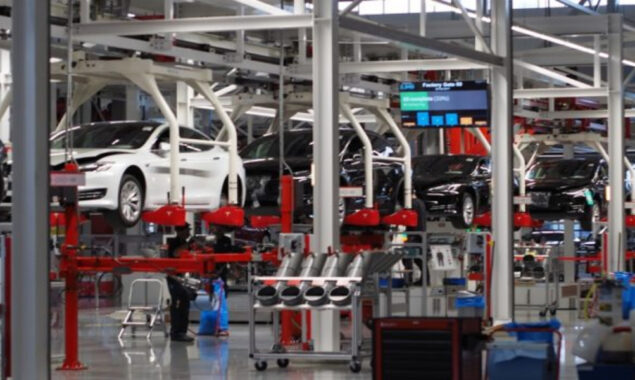
KARACHI: The auto sector production is booming, but the industry is also suffering a squeeze on margins through higher costs, and buyers have to pay much more for vehicles compared with most of the world.
Despite multiplying prices, there has been no letup in car sales. However, FY23 is going to be a challenging year for the sector, amid higher taxes, stringent measures on auto financing and rising cost pressures.
Ali Jamali, CEO of Indus Motor Company, highlighted at a briefing that the current month’s orders were booked up till June 2022 and the booking orders were hovering in between 4 to 4.5 months.
“This year’s sales volumes remained impressive. However, the company anticipates demand to receive a hit during FY23, as an outcome of elevated interest rates, stringent auto financing conditions together with bloated current account deficit will further exert pressure on the exchange rate.”
Indus Motor is estimating sales volumes to take a dip of around 10 to 15 per cent and the company management hinted at a price hike of around 11 to 12 per cent but not until June 2022.
The increased number of bottlenecks and delays in the auto supply chains are also helping suppliers push through the price hikes, as the end producers are willing to pay premiums to ensure supply.
At the same time, higher global commodity prices, notably for oil, energy and metals, is also pushing up the auto production costs.
According to the Pakistan Automobile Manufacturers Association (Pama), the overall industry sales during the eight months (July-February 2021/22) period marked a growth of 46 per cent to clock-in at 216k units as against 148k units sold in the same period of the last year. The SUV sales during the period increased 71 per cent to reach 10,967 units.
The current strength of car sales bodes well for corporate profits but the extent to which margins are under pressure is a concern. Coming months will reveal whether the producers seek to push through higher prices to offset the increase in costs, or whether cost pressures will abate.
The Auto Industrial Development Policy (AIDP 2016/21) is dubbed as the most successful policy for the sector. The main objectives of this policy are to help increase the volume with improved quality, catch the attention of the investors, creating an extensive competitive environment, minimising costs, technological improvement, balance between tariffs and growth, as well as eliminating the monopoly of the existing car manufacturers.
Asif Rizvi, Chief Executive Officer of Lucky Motors, said that the company came into existence as a result of the government’s new entrant policy under the AIDP 2016/21.
“This is a very successful government policy offering concessions for any new brand and product and creating a balance and level-playing field between the existing players and potential newcomers.”
“The result of this successful policy has been the addition of 12 new entrants, as car manufacturers bring in around 15 brands and 25 new vehicles in the country.”
Lucky Motor Corporation hand-in-hand with the automobile manufacturers has also ventured into auto-parts manufacturing and has simultaneously set up a manufacturing capability to manufacture seats, wire harness, air-conditioners and injection molding parts for the automobile plant.
As far as consumers are concerned, there are simply no good quality new cars available at lower price points, forcing them to buy used imported or older locally-manufactured models from the secondary market. The variants being introduced in the country by the new entrants have so far failed to fill in those gaps.
Read More News On
Catch all the Auto Bill News, Auto Policy News, Business News, Breaking News Event and Latest News Updates on The BOL News
Download The BOL News App to get the Daily News Update & Follow us on Google News.




